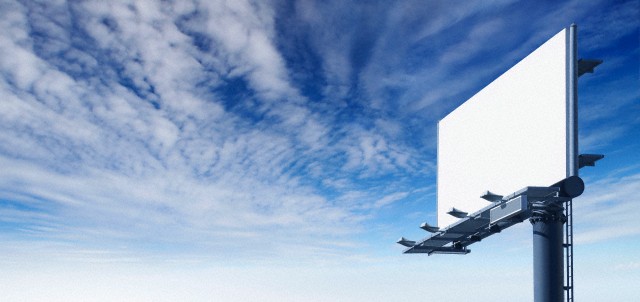From Digital to OOH: Why I'm Excited to Work in Outdoor

When I transitioned from a career in digital advertising to out-of-home (OOH), some of my peers were surprised by my new job. I announced my new position as head of research and insights at Clear Channel Outdoor Americas on social media and was met with many congratulations, but also some rather sarcastic remarks. Of these, my favorite was: "You're working in outdoor? Old school!"
Don't get me wrong. I understand why people might label out-of-home as a dated medium. After all, OOH is "the" original form of advertising. In Pompeii commercial messaging was reportedly found in ruins. Ancient Greeks and Romans were known to have stickered papyrus outside to advertise lost-and-found notices. Wall paintings doubling as ads are still widely used today in many parts of the world.
It's tempting to dismiss OOH for having been around a long time and to focus on digital for being new and alluring. Of course, having spent most of my career in digital advertising, the appeal is not lost on me -- and there are many things to love about the medium. The ability to obtain in-depth audience insights, comprehensive tracking and performance measurement and real-time optimization all make digital powerful and successful.
Until recently, the aforementioned advantages inherent to digital have not been available to OOH advertisers. However, as smartphones have become more pervasive and consumers now carry connected devices with them at all times, we have the ability to connect the digital and the physical worlds. And OOH is nothing if not physical.
The creative format in OOH is extremely versatile and visible, making it a high impact creative medium. Billboards serve as canvases for large format ads and lend well to creative expression in campaigns that surround consumers who, let's not forget, spend 70 percent of their time out of their homes. And because OOH ads are generally seen during downtimes, like driving to work or riding the subway, they are more likely to catch people's attention than ads that compete for their attention while they are trying to do something else. In terms of "getting in the way" OOH is perhaps the least invasive form of advertising to consumers.
A recent study carried out by Keller-Fay showed that OOH is also incredibly effective at driving earned media. Despite the fact OOH only makes up about 4 percent of the media budget, 12 percent of earned media driven by advertising was from OOH. This disproportionately high amount of earned media relative to its ad spend speaks to the ways it stands out from other media. Its messages are always viewable: They cannot be skipped, nor can they be ignored by multitaskers, making OOH an influential and cost effective way to generate conversations about brands.
Thanks to its size and locational positioning, the recall rates for out-of-home are also very good, as our campaigns so often demonstrate. Take the case of Ben & Jerry's. In 2014, Ben & Jerry's partnered with Haworth Marketing + Media and Clear Channel Outdoor to launch a new ice cream flavor called "Core." Working closely with Research Now, Clear Channel engaged in the first-ever study to use sequential GPS tracking and mobile survey research to assess the campaign's impact.
The Clear Channel Outdoor/Haworth campaign generated a 54 percent increase in awareness of Ben & Jerry's new product and a whopping 139 percent increase in brand awareness. What's more, the longer the campaign ran, the greater the increase in awareness. And the buck doesn't stop at the awareness level. A recent global econometrics study proved that OOH delivers a high return on investment. For every dollar spent on OOH advertising, $2.80 in sales result.
In combination, smart phone data linked with OOH campaigns make for a best-in-class ad mix and a very powerful proposition for marketers. By using GPS location data from the apps that consumers use, we can start to build profiles that are not just based on where consumers live but where they go when they are not at home -- location profiles, if you will. With the right customer segmentation, we can create location profiles for any audience in the same way a sophisticated digital advertiser can build an online profile of their target customers. In this way we can ensure OOH ads are perfectly placed to reach exactly the right target customer in the most efficient way possible.
Similarly, we can use location data to measure who has been exposed to an OOH ad and then measure the impact of the campaign, either via surveys delivered directly to their mobile device or by tracking in-store visits via -- once again -- GPS data.
So what does all this mean?
Put simply, it is now possible for marketers to apply to same level of precision targeting and performance tracking that they are accustomed to with digital media to their OOH campaigns. Smartphone technology, combined with OOH advertising, creates a new opportunity to engage customers using a high impact medium. After all, who doesn't like the idea of seeing their name in lights? OOH is a space for smart marketers to watch, as we are beginning to explore exciting ways to incorporate digital capabilities -- and we're already seeing fantastic results.
The opinions and points of view expressed in this commentary are exclusively the views of the author and do not necessarily represent the views of MediaVillage.com management or associated bloggers.


